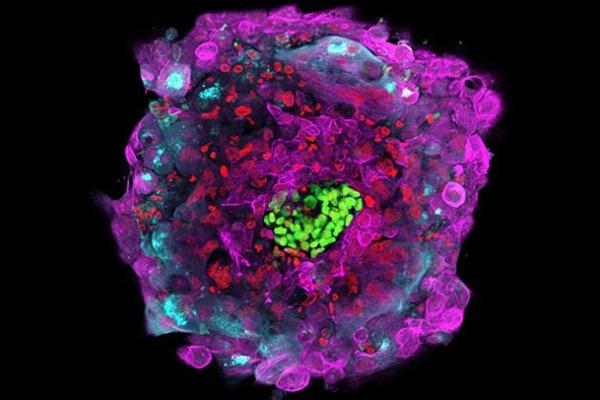
CAMBRIDGE, England, May 4 (UPI) — For the first time, scientists were able to observe the process of embryo implantation.
The implantation of the embryo into the tissue of the uterus is one of the earliest steps in human development after fertilization. Until now, however, scientists had not been able to directly study the process.
Previously, scientists have abided by an ethical rule that limits embryo development to seven days — the point at which implantation normally occurs.
But researchers at Rockefeller University in New York and the University of Cambridge in England were able to sustain embryonic development past the point of implantation by chemically mimicking the uterine wall. The study’s embryos were abandoned just before an updated ethical wall of 14 days.
“This portion of human development was a complete black box,” Ali Brivanlou, a professor at Rockefeller and head of the university’s Laboratory of Stem Cell Biology and Molecular Embryology, said in a news release.
In unlocking that box, researchers were able to watch key points in the early development of the human embryo, allowing them pinpoint differences between the development of human and mouse embryos.
One surprise was a phenomenon known as self-organization, whereby a group of objects or system of components organizes on its own, without external input.
“We had seen self-organization using this system in the mouse embryo, and also in human embryonic stem cells, but we did not anticipate we’d see self-organization in the context of a whole human embryo,” explained Brivanlou. “Amazingly, at least up to the first 12 days, development occurred normally in our system in the complete absence of maternal input.”
Further exploration of early embryonic development could offer valuable insights into the nature of miscarriage and aid fertility research. The study could also open up new avenues of research into the origins of disease and efficacy of treatments using human embryonic stem cells.
“We’re going to take a step back to the first day and systematically move forward,” said Brivanlou. “We’d like to get the complete molecular signature, and then move on to how these cells communicate with one another to figure out what cell type they are supposed to become. There is a lot more to be studied during this stage and we look forward to shedding more light on this vital step in human development.”
The study, published in the journal Nature, was accompanied by commentary recommending new ethics rules and an extended limit for the growth and development of embryos in the lab.
“Given the potential benefits of new research in infertility, improving assisted conception methods, and in early miscarriage and disorders of pregnancy, there may be a case in the future to reconsider this,” Daniel Brison, a professor at the University of Manchester, told the BBC.
“Now that it has become possible to culture human embryos to the 14-day limit and perhaps beyond, the time is right for the scientific community to educate the public about the potential benefits and to work with regulators on ethical consensus to guide this important research,” added study co-author Amy Wilkerson, an associate vice president of research support at Rockefeller.






